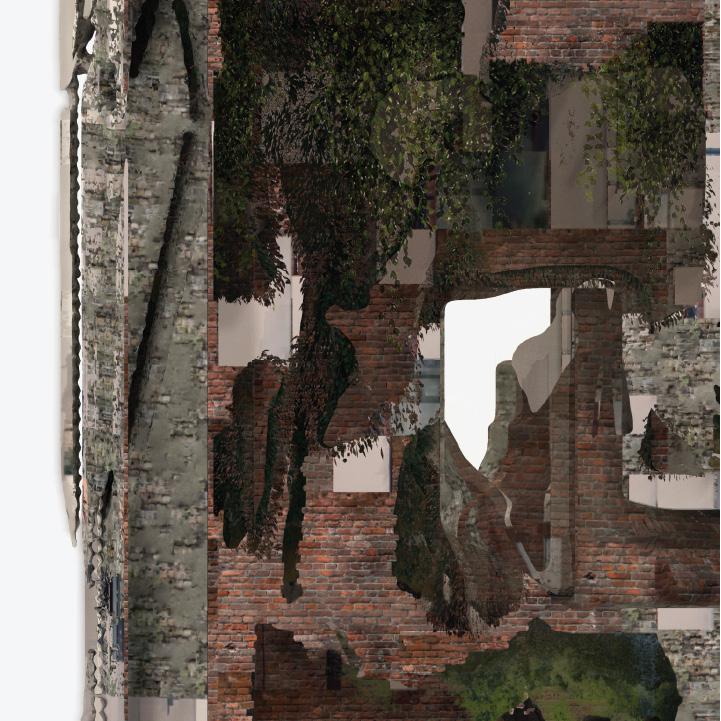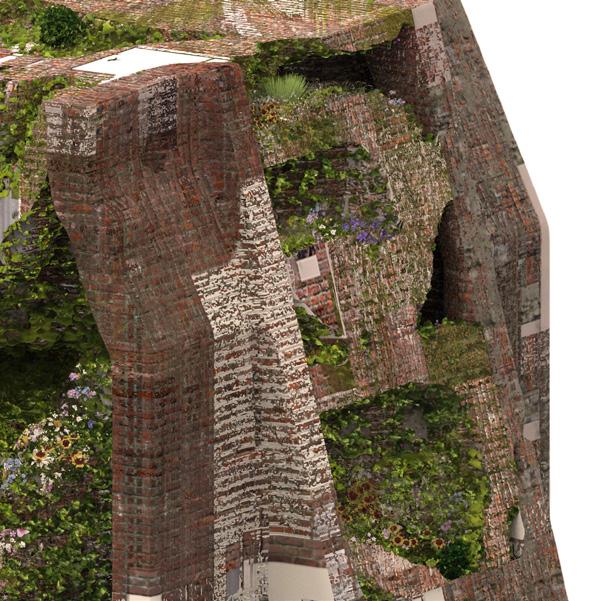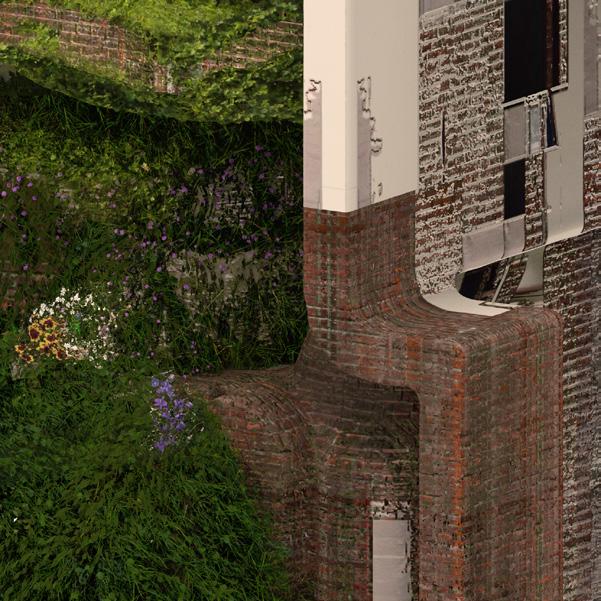
1 minute read
WITHIN THE SCAPE
The purpose of this project was to produce a figure from the autonomous components of an American Grain Elevator. Establishing a patchwork of heterogeneous parts places an emphasis on materiality, degradation, and ambiguity of figure and ground. In deterritorializing the typical anthropocentric subject, the form produced vital materiality through its complex interrelationships of parts. In reframing the idea of the fold as a continuous material manifestation, the use of texture, degradation, and seed repository throughout emphasizes the ambiguity between form and ground.

Advertisement
The interior of the figure relates to the external context with a continuation of the material hierarchy. The familiar anthropogenic material is disrupted by natural wilds of organic matter, which deterritorialize humans at the center. The loss of human imposed ordering reflects a shift from machinery to biochemical surface. The leftover human influence of the orthogonal organization is deteriorated by organic matter which has developed its own sense, to produce messy-self organization. This growth originates from an anthropocentric perspective of nature. As the form was intended as an exhibition of idealized natural growth. Human imposed control established a display area for the highly romanticized picturesque growth, humans often associate with nature. Removing humans from the center produced natural wilds of growth that transitioned into unfamiliar vegetation. This new growth is not typically recognized by humans as belonging to their idealized vision of nature. While human influence is still somewhat recognizable, the imposition of control on nature produced outcomes not intended to serve them. Spatial zones are no longer designated by a formal organization, but rather, microbiomes operate as an ecology of parts. The decimation of this formal organization produced a cavernous shell containing the leftover remnants of human design at the base of the figure. The build-up of rubble and trash isolates machinery left behind by humans. These pristine, fully anthropocentric elements are impenetrable and their isolation produces a sterile environment.








